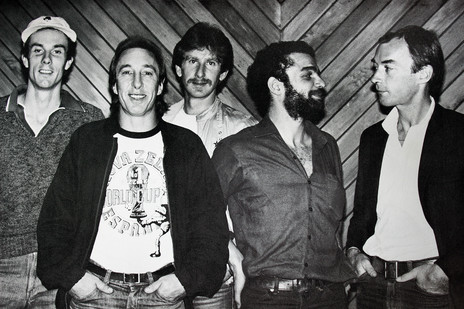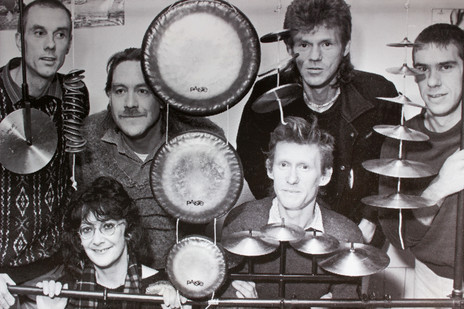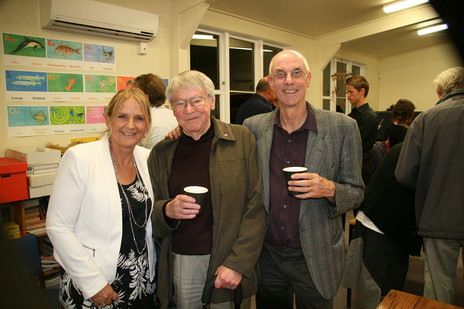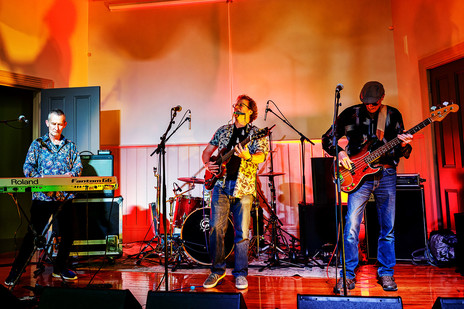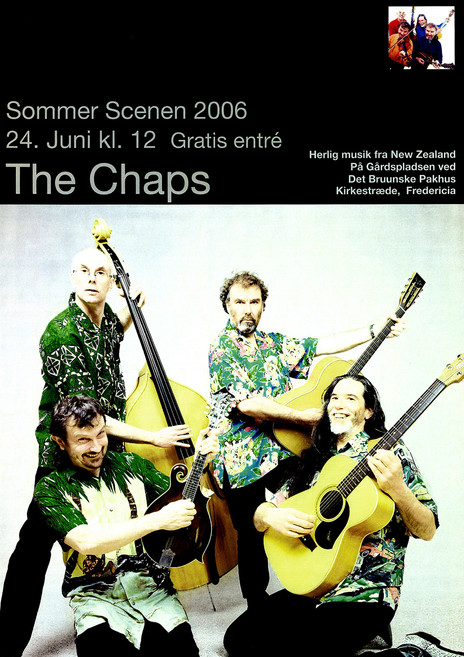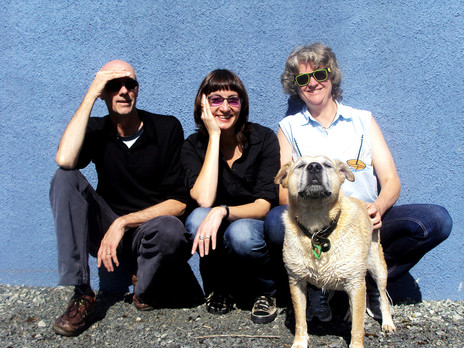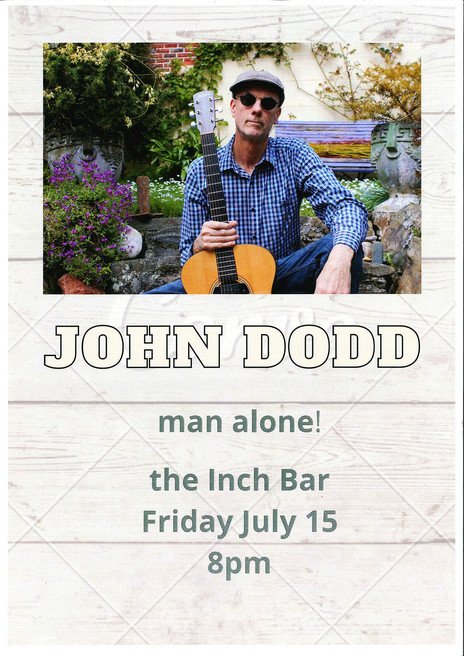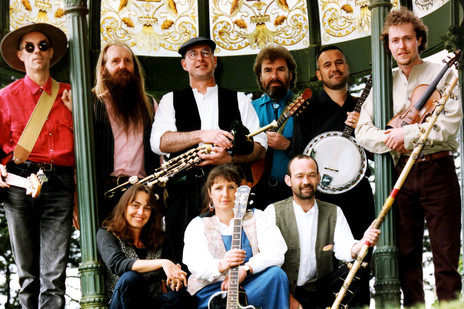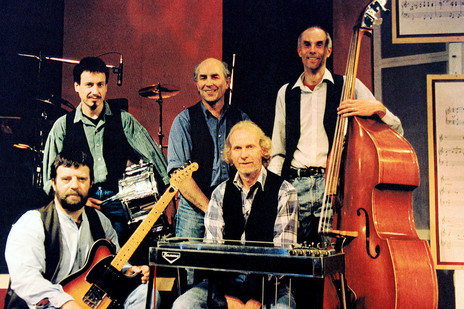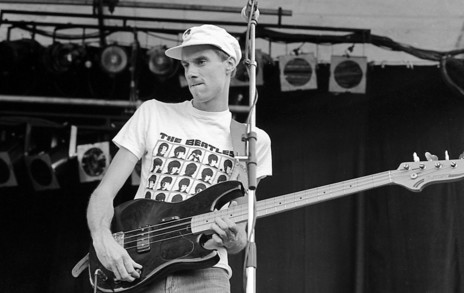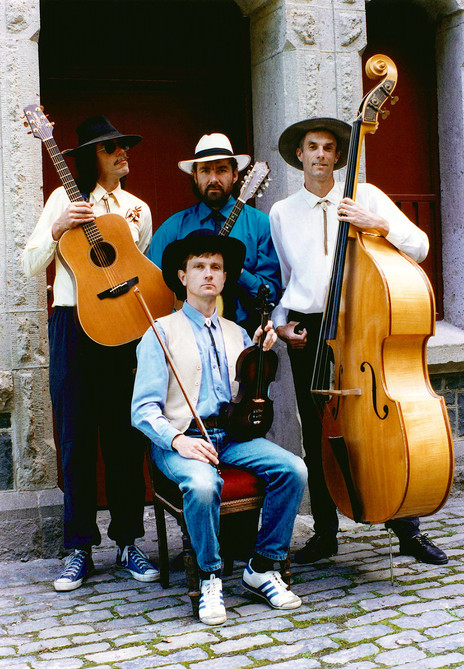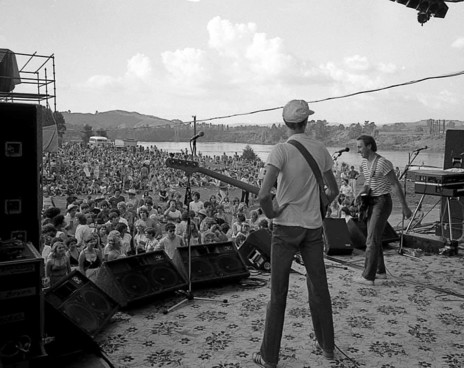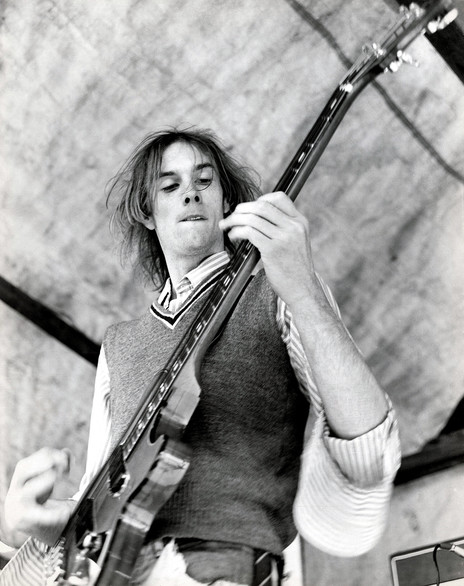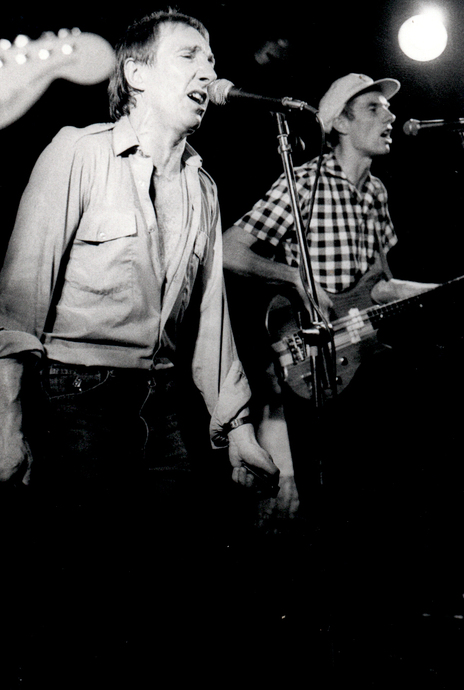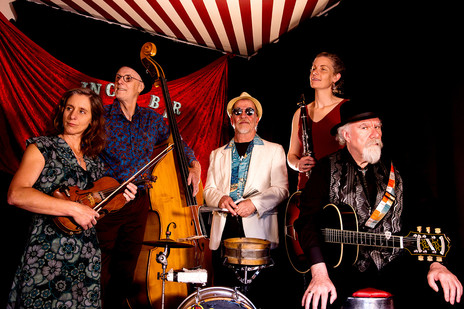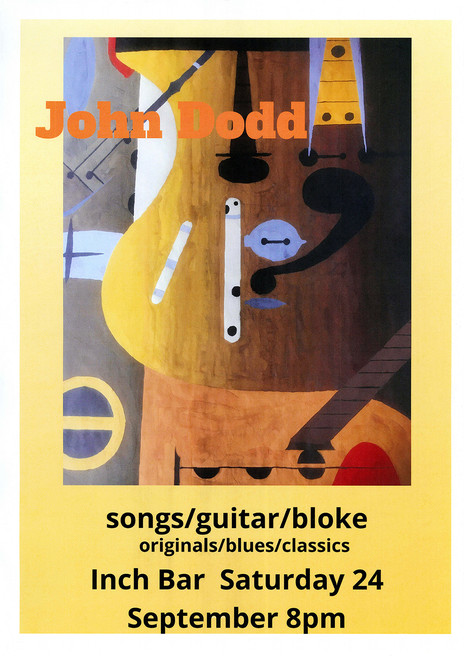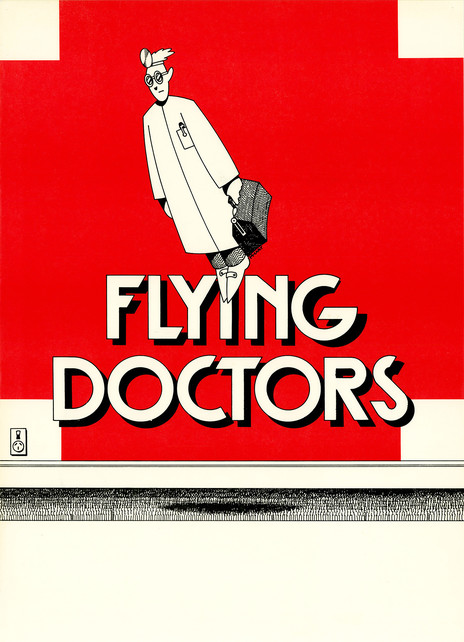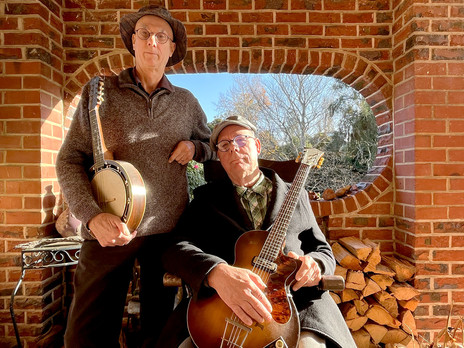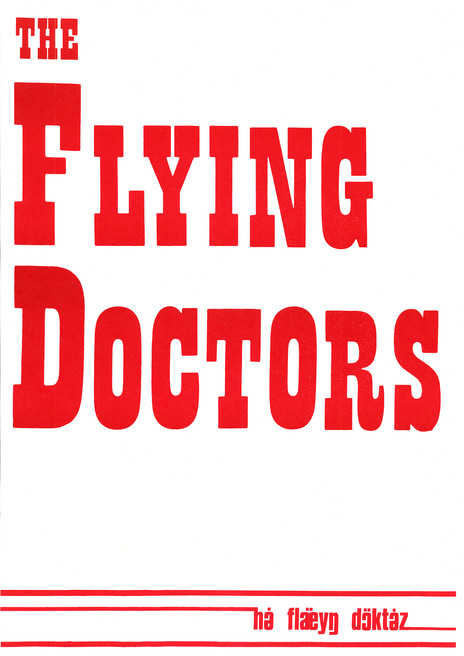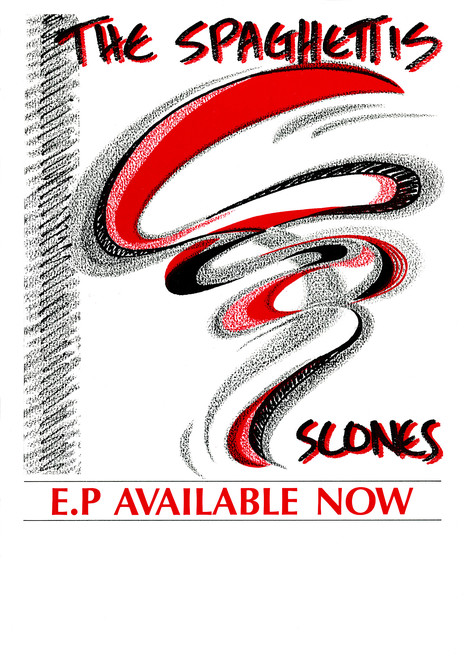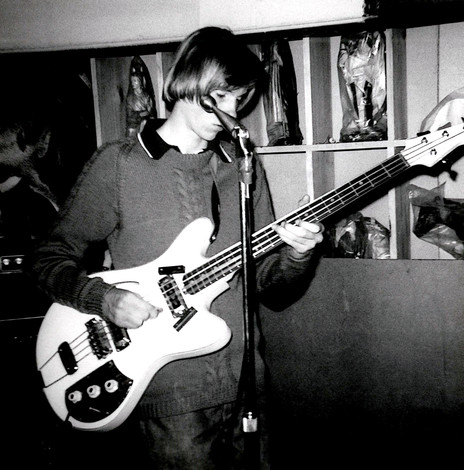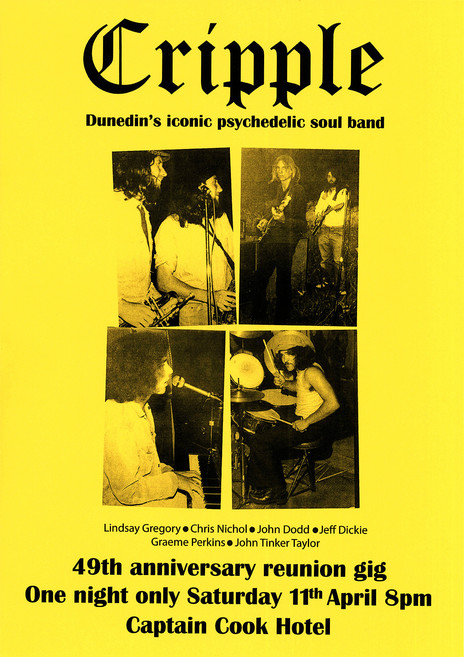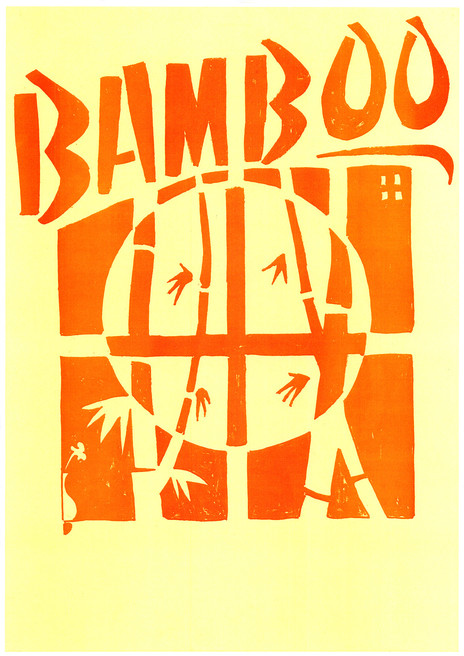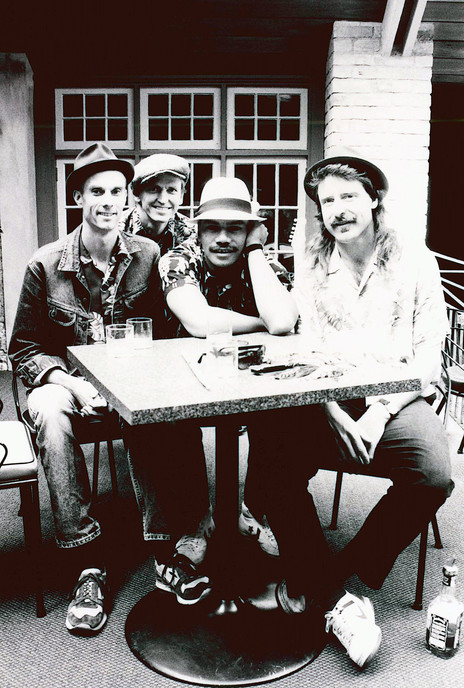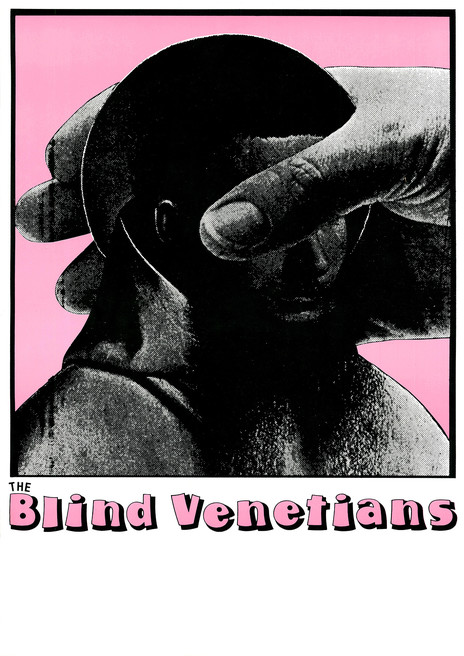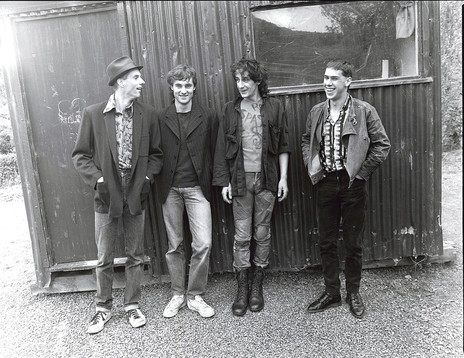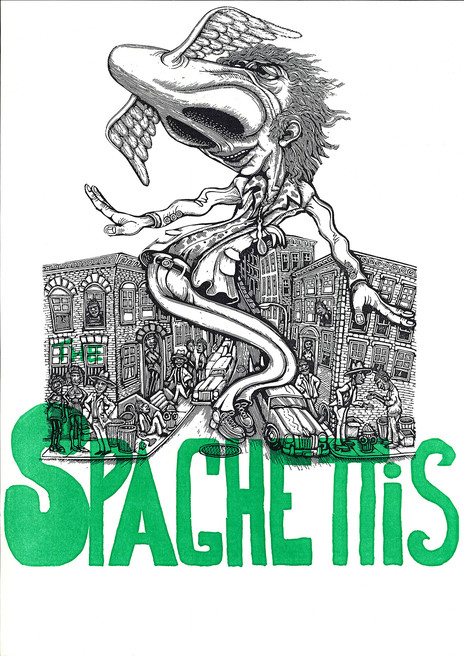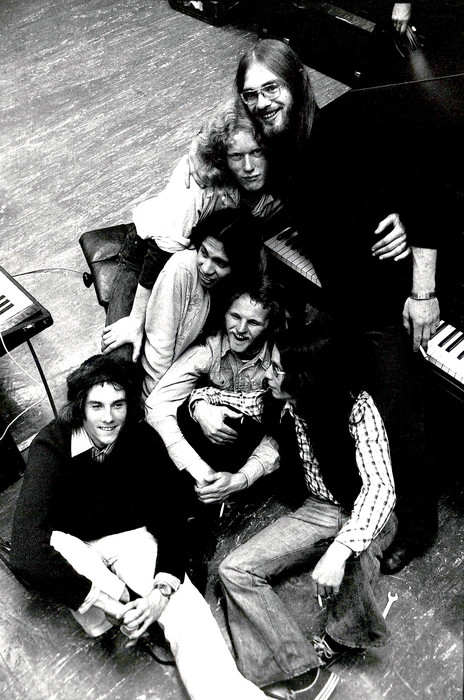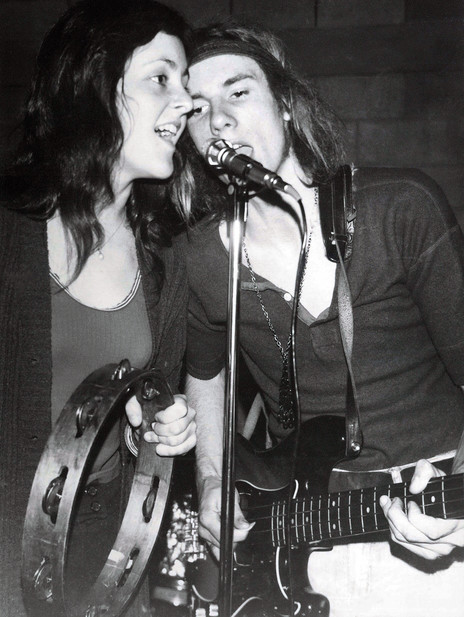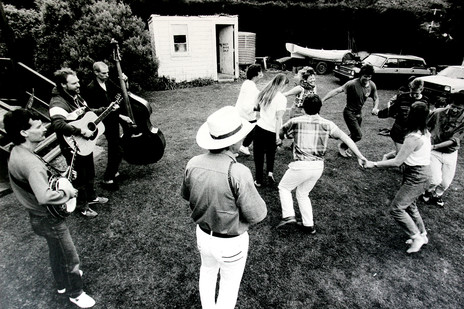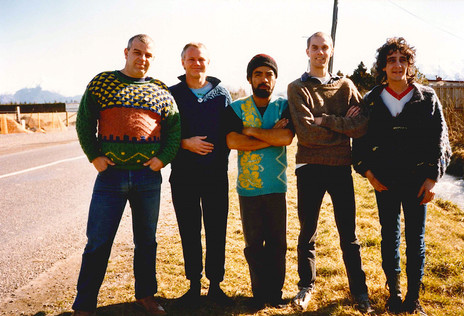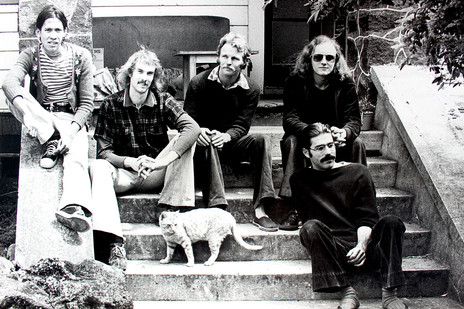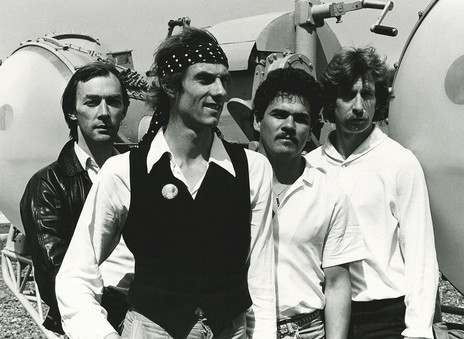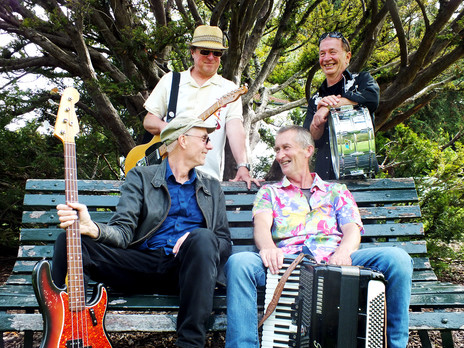A highly regarded bass player and sometime guitarist, John has played with well-known bands, and many others that probably should have been. He ran the Dunedin EMI record shop during the height of the initial Flying Nun era, a vital place for bands and fans alike. He taught music to generations of Dunedin kids, among them Nadia Reid and Aldous Harding.
Throughout, he’s flown the flag across genres including 60s rock, soul, 70s jam bands, reggae, blues, roots, folk, country and bluegrass. First hitting the boards at school in 1968, he’s still gigging, recording, and making a difference.
One, two, three, four ...
Growing up in a house filled with classical music, at age 10 John heard Paul McCartney’s count-in to ‘I Saw Her Standing There’, the opening track on The Beatles’ 1963 debut album Please Please Me, at a neighbour’s house.
“I was hooked, it was instantaneous. The Beatles had just come through Dunedin, but I’d missed it as I was a bit too young. From there I was listening to the radio all the time, to all the really good songs on the charts. The Byrds, The Beach Boys, The Stones, The Animals, the Motown bands, and I got deeply into it.”
Then, in late 1966, two years after his rock’n’roll epiphany, John’s physicist father took the family with him on a sabbatical to Boulder, Colorado.
“That year was amazing. My parents bought me a radio for Christmas in 1966, and as we all know 1967 was a pretty important year in the history of rock’n’roll. I found this radio station coming out of Denver 24/7 with all the wonderful music of the day. It wasn’t conservative like 4ZB, [it played] Aretha, James Brown, Cannonball Adderley, Jefferson Airplane, all sorts. I was exposed to so much. Then my parents bought me a guitar for my 13th birthday and I really got the bug.”
High school beginnings
Back in Dunedin at Otago Boys, the first tentative steps into bands started in the fourth form playing drums alongside lifelong friend Jeff Dickie and others. “There were a lot of keen musicians in my year, and we were just trying things out. A lot of them still play, like Jono Lonie who’s had a long career in Auckland as a fiddle player.” The switch to bass came in the 5th form. “I’ve always laughed that I was the worst guitar player at school, so I got pushed onto bass, but it suited me and I’ve stayed on it ever since.”
The following year John started a new group with Bernard Madill (brother of renowned luthier Peter Madill) and Chris Nichol. “It was way more eclectic, all over the shop, trying to play – and I’m using the word ‘trying’ literally – everything from Otis Redding and Miles Davis to Jimi Hendrix and Bob Dylan.” This line-up evolved into what became Cripple, with Jeff Dickie later joining on guitar.
Cripple and classical
Lasting six years (1969-75) through the move to Otago university, Cripple had a horn section and became regulars on Dunedin’s live scene. John draws parallels to the Netherworld Dancing Toys and how many of the band went on to have musical careers and still remain lifelong friends.
Cripple’s influences were a mixture of West Coast psychedelia and early soul – Electric Flag, Quicksilver Messenger Service, the Grateful Dead, Buddy Miles and Otis Redding.
“When the band started we could barely play but after four years at university we were pretty good. But I have to say the one difference between what we were doing [compared to] The NDTs, The Chills and The Verlaines etc, was that we put a lot less emphasis on playing our own music. We wrote a few but mainly focused on covering songs we liked. There were no real original bands in Dunedin then, except Lutha. When the Flying Nun bands came along waving the flag for their own songs, that was fantastic.”
Sadly, Cripple never recorded. “It simply wasn’t on the radar, it’s just the way it was then. There were no recording studios in Dunedin except Radio 4ZB and they didn’t open their doors to bands at that stage. And of course, home recording wasn’t an option yet.”
During this time John also retained his connection with classical music, studying at Otago, and playing bassoon in Dunedin’s Youth and Civic orchestras. Prior to the year in Colorado, he had sung in St. Paul’s Cathedral choir.
The Chappaqua jam band
In keeping with the times and directly influenced by BLERTA, John’s next step was the Gypsy Roadshow, which he describes as a “fascinating holiday project” put together by Craig Johnson and Steve Young, who went on to form Mother Goose. They assembled a bunch of university students and bought a truck.
“We were basically a pack of hippies. Some actors, a band, and a magician. We travelled around the South Island putting on cabaret shows, playing in pubs and entertaining kids in camping grounds over the Christmas holidays. It was a lot of fun.”
On this “performance holiday” John met two other musicians, Wayne Baird and Hamin Derus, who were starting a new band called Chappaqua (Native American for rustling or rattling land). Interested in the new direction they were taking, and aware the others in Cripple would probably spread their wings after graduation, John jumped ship. “Chappaqua’s music was really, really interesting and exciting. I loved it, so I joined this fledging band. The Cripple guys have remained lifelong friends, but they weren’t very happy at the time,” he chuckles.
Chappaqua did “the big hippie thing, you know, touring in a bus ...”
Chappaqua played around Dunedin and toured the South Island through 1975. Late in the year they decided to move to Auckland and toured their way north. “By that stage we were doing the big hippie thing, you know, touring in a bus. But the wheels came off for the band in the North Island – it’s a long story.”
John was also moving to Auckland with plans to become a teacher. With the split, two key Australian members left. The others reconvened, but John explains, “The Auckland version wasn’t as stimulating, the South Island line-up had been great. It was improvisatory rock with elements of the Grateful Dead, Santana, and Cream. Traffic was also a big influence. These days you’d call it a jam band. When we did great gigs it had an amazing vibe. We just all seem to speak as one. But we never kind of got there again when we reformed.”
Chappaqua also never recorded, but, like John, Wayne and Hamin went on to have long musical careers. Wayne played with Rick Bryant and the Jive Bombers, as well as The Neighbours, and kept gigging with Auckland rhythm and blues band The Alibis until his death in late 2023. The Australians who departed on the tour north also had long careers – keyboardist Steve Keily in particular, while drummer Michael Porter introduced Jimmy Barnes to Cold Chisel and went on to work for the band.
Stretching his musical wings
With Chappaqua over, John left teaching in Auckland behind and shifted to Armidale, New South Wales. In a sign of things to come he played with three rock bands (two with former Chappaqua drummer Michael Porter) as well as a jazz combo, a country group and a folk band. He also found time to play with the local orchestra. This was the start of living off performance full time.
Returning to Auckland in 1978 he again joined forces with Wayne and Hamin to form Bamboo, along with guitarist Louis Rawnsley who had been in The Underdogs and played on the classic ‘Sitting in the Rain’. It was interesting for John, who with Jeff Dickie had spent hours at age 13 figuring out how to play the song’s guitar line off the record.
While they also played swing, blues and funk (à la The Meters), it was reggae that defined the band’s sound. Bamboo was among New Zealand’s first reggae bands prior to Bob Marley’s famous visit. Others around this time included The Backyard Blues Band featuring future Herbs members, and Chaos which featured future Upper Hutt Posse member Darryl ‘DLT’ Thomson. Chaos and Bamboo had gigged together in Porirua and at Auckland’s Freeman's Bay Hall for a Bastion Point benefit concert.
Bamboo drew big crowds following the massive impact of Bob Marley’s visit (John was at the Western Springs gig) and the popularity of others including Peter Tosh, and the band frequently gigged in South Auckland and touring the North Island. They played the Nambassa Festival in 1979.
“Once again, we weren’t playing much of our own music, but lots of covers that people were digging. We were doing really well and packing places like Rotorua and the Ngāmotu Tavern and White Hart in New Plymouth, but Bamboo eventually ran its course.”
The Flying Doctors go original
John followed Louis and Wayne for a brief stint in Hattie and the Hotshots before meeting up with guitarist Mike Farrell (Farelli). In 1980 they put together the Flying Doctors with keyboardist Liam Ryan and drummer Mike Abbott, both of whom had been in the last Bamboo line-up.
“That was my first band that adopted the original music mantra. Farelli and Liam were great songwriters and I put in a few. We worked our butts off. We were touring all over the show and it was a really exciting band.”
On paper The Flying Doctors should have done well. With Mike Corless at New Music Management behind them they were getting good gigs, playing Mainstreet, The Gluepot and opening Sweetwaters in 1980. Some good recordings were also put to tape.
“Success was beckoning, but it wasn’t to be. A fellow called Midge Marsden kept coming to our gigs and saying how much he loved us. Then he went and bloody stole Liam. I remember Liam ringing me and saying sorry man I need the money. Midge was offering a good wage and we were still on the bones of our arse, so the band folded.”
Non-stop touring with Midge Marsden
Two months later Liam rang saying “Midge is looking for another bass player and he wants you, so ‘bam’ I was in there.” Mike Farrell joined soon after, meaning three of the Flying Doctors were working with Midge, along with the legendary Ross Burge on drums. Several Flying Doctors songs were added to the set.
“This was my little bit of the big time. Midge knew how to put on a show, always has, and we would get a crowd wherever we went, even on a Monday night. The pubs were always packed and there were always parties. It was a hell of a good band, especially when we got Ross on drums. I look back on it with a lot of pride, they were exciting times.”
Working solidly from 1981 to early 1983, the band pretty much lived on the road with a full-time crew, playing around 240 gigs a year. This line-up recorded an album, 12 Bars from Mars, released in March 1982. It was planned as their stepping stone into the Australian market.
Hearing the album now, well played and slickly produced, it reflects the vibrant pub rock circuit of the day. You can almost taste the Lion Red and smell the cigarette smoke. There are the obvious blues stylings, along with Midge’s immediately recognisable vocal and harp, while some songs sound tailor-made for the Oz-rock scene: ‘Hard Town’ owes more to The Angels than BB King. ‘One Wheel in the Sand’ could be straight out of Don Walker’s Cold Chisel songbook (Midge sounding remarkably like a balladeering Barnsey), along with ‘Shooting in the Dark’ and ‘Don’t Stand in Corners’/’Ask That Mountain’, both of which could be Men at Work, New Zealand style.
Back to Dunedin
Sadly, the album didn’t open doors across the Tasman. After more touring and a final gig at Sweetwaters 1983, Mike Farrell and Ross Burge decided they’d had enough of life on the road. With them gone John decided to call it a day as well and headed back to Dunedin to finish his music degree.
“So I came back and did some subjects that interested me. And I started playing with various local musicians like The Jumpers, In Transit (a jazz band led by Trevor Coleman) and The Blind Venetians.”
During 1983 John also found time to play on two South Island tours for Midge, as well as a North Island jaunt with The Neighbours. He would also tour with Midge, Rick Bryant and Chicago blues guitarist J. Wood between 1985-88. Then in 1984 at the height of the initial Flying Nun wave he was offered a job, managing the EMI record shop in George Street.
“It was great, but to be totally honest the nine to five aspect ground me down after a while. I didn’t want to spend my life just selling other people’s music. But there was a vibe to that shop because it was the hangout place for all the people who loved music. Lesley Paris and Francisca Griffin of Look Blue Go Purple were my shop assistants. Shayne Carter, Martin Phillipps and others of the Flying Nun family were all regulars.”
The new music happening in Dunedin was markedly different to everything John had been involved with up to that point.
“Initially I was a little bit perplexed to be honest, the music I was hearing wasn’t very well recorded and the punk thing had never really interested me very much. I was playing in Midge’s band and Bamboo, where the influences were blues, reggae, R&B and soul. That was really where my heart lay. But when I heard what the bands were doing and how much they were into it ... I already knew The Verlaines, and then I started working at EMI ... I knew they were working hard to create interesting songwriting. So, hey, respect. I loved Sneaky Feelings, great band.”
It was during this time that John set the template for what lay ahead, ultimately leading to more acoustic-styled music and teaching.
“After EMI I started teaching guitar in high schools because I realised I kind of needed a day gig as well. And I started playing in a bluegrass band which led me into the acoustic world that I’ve kind of been in ever since, alongside lots of other projects.”
His interest in playing in multiple groups across different genres, often concurrently, continued to extend that CV. One became John’s longest on-going band, another remains his favourite fun time gigging group, and there was a “career highlight” American tour. But before we get to those, here’s a summary of other bands and projects.
In the mid-80s his focus was The Spaghettis, a much-loved rootsy/bluesy rock’n’roll band
Between 1985 and 1988 John was part of bluegrass group Hard to Catch, which morphed into High Country Bluegrass, but his main focus during this period was The Spaghettis with Ross Nichol, Chris Maher and Andy Anderson. A much-loved rootsy/bluesy rock’n’roll band, The Spaghettis toured the South Island extensively and recorded an EP.
During the winter of 1985 John also gigged with Queenstown band Cats and Ratz. After The Spaghettis ended in 1988 he continued as part of the close-knit Queenstown music scene, playing in both The Ratz (which evolved out of Catz and Ratz) and Mango. With a busy gig schedule John often commuted from Dunedin two to three weeks a month. The Ratz played soul and R&B covers but during this time he finally brought his own songwriting to the fore, and an album was released on tape.
The Ratz gigged frequently until 1991, by which time John had a young family and elected to stay closer to home. Additionally, in 1989 a new acoustic group, The Chaps, kicked off. 1993 to 1994 also saw him gigging with country rockers The Valiants. From 1995 to 2001 John was part of The Pioneer Pog ’n’ Scroggin Bush Band, playing and recording Otago folk songs, and guesting at Australia’s National Folk Festival. He played on Bill Morris’s Hinterland album in 2014, and recorded the Freaky Pea EP with Delgirl, which he was part of from 2011 to 2015. During 2015 he also performed with The Saddle Hillbillies, another bluegrass band.
There’s more ... John’s has been a member of the MLT Song Writing Awards/Tui Country Music Awards house band since 2001, backing many artists including Tami Neilson, Delaney Davidson, Barry Saunders, Don McGlashan, Jackie Bristow, and Kaylee Bell, to name a few.
He played two Tally Ho shows with the Dunedin Symphony Orchestra, Martin Phillipps, Shayne Carter, Graeme Downes, Nadia Reid, Anna Leese and Anthonie Tonnon.
He’s been available “on call” for the Jenny Mitchell band since 2019. He played on the Tall Folk album Wiser in 2021 and has been part of the Lara Rose Band since 2022. He currently performs as one half of duo Dodd and Egenes, and there have been many other one-off or short-term projects not listed here.
There have also been TV soundtracks – Trivia Company, Oi, Wild Sydney, Battle for Breaksea Island and Southern Harbour – and he won the Aotearoa Prize for Composition 1991 (Otago University).
Cowboy lounge
In 1989 John teamed up with Marcus Turner, a respected folk musician who had been a presenter and director on kids’ TV shows including Spot On and Play School.
“He was hell of a musician. He said do you want to form a band? I said, yeah because I always say yes when someone asks me that. We got together with a couple of other gentlemen, Hyram Ballard and Mike Moroney, and called it The Chaps. We went to Europe three times and made three albums. In some senses it’s probably my most significant band in terms of longevity and what we got done.
“It was very eclectic, an acoustic string band with mandolin, dobro, and fiddle, and I was playing double bass. We were a vocal band, often with four-part harmonies, everyone sang. And it was more of a concert band. We did a lot of folk festivals and had good repartee between songs, a humorous vibe that worked really well. Seventy percent was original material. Marcus called us cowboy lounge – banjoless bluegrass, hornless jazz, drummerless rock.”
Sadly, Marcus died suddenly the week before his 60th birthday in 2016. The Chaps continued for a time with fiddler/mandolin player Anna Bowen and did one last European tour before things came to a halt.
John is still playing with Anna Bowen and Mike Moroney in a band called Skin and Bone that he describes as having “a similar kind of vibe to The Chaps”. They’re gigging (“wherever we can”) and currently putting the final touches on a new album.
The Whirling Eddys
After almost 20 years the Whirling Eddys remain John’s favourite gig band. Also featuring Terry Ebeling, Doug Wright, and Stephen Hudson, he describes them as “unpretentious, always fun and dependable.”
“So that’s kind of my main band now. I love playing with the Whirling Eddys. It’s just a good-time dance band really. We do a lot of blues, funky rhythm and blues kind of stuff, and 60s songs. We play about 40 percent of our own music. We’re close mates and have just played and played over the years, and get a really good groove going. We have a ball and we’re more than the sum of our parts. Stylistically I just love that sort of playing.”
Donna Dean
Among this ever-evolving list of musical adventures John highlights one as a particular favourite – touring the US in 2013 with New Zealand country singer Donna Dean and American guitarist Johnny Egenes.
“That was the best musical time in my life. I met Donna at the Tui Music Awards and MLT Song Writing Awards. I think she’s New Zealand’s best country singer-songwriter. There’s a guy I play with here in Dunedin called John Egenes – an American who grew up in LA playing in bluegrass and country bands in the late 60s and early 70s. He spent the next 30 years touring the American southwest from Texas to California and seems to know everybody in the business. He relocated to Dunedin in 2005. Donna did an album down here with him producing titled Tyre Tracks and Broken Hearts, which also features Albert Lee and Amos Garrett among others, and we toured it.
“We did 15 dates and having John on the tour, going round all his old haunts through the southwest was something. We went as far west as Texas, down to San Antonio, across to New Mexico, up to Oklahoma and Arizona, across to LA and up to Santa Barbara. Bill Morris, who’s a filmmaker and a songwriter who made a fantastic album called Hinterland [2014], which I played bass on, he came along and made a film of the tour called The Sound of Her Guitar. It was bloody exciting and so much fun.”
Teaching music at The Park
Alongside his own musical career John has also played an important role for thousands of Dunedin high-school students. Logan Park High School – or “The Park”, as it’s known locally – has produced a number of well-known musicians including Graeme Downes and John’s sister Jane, both of The Verlaines which had its beginnings at the school. Also, Martin Phillipps of The Chills (Jane was also in Martin’s first band, The Same), Andrew Brough of The Blue Meanies, The Orange, Straitjacket Fits and Bike, and Francisca Griffin of Look Blue Go Purple. Aldous Harding and Nadia Reid are more recent alumni.
John started teaching guitar at Logan Park in 1986. In 1992 he covered for the music teacher who went on a year’s leave of absence to travel. He then got a job working in the music department at Dunedin College of Education (Dunedin Teachers College). In 2001 he returned to Logan Park as head of the music department, working in this role until retiring from the position in 2019. He then continued as a class music teacher until the end of 2022.
After so long in music education, he enjoys watching his former pupils’ careers
“I’d sort of come full circle because I’d trained as a primary teacher and here I was working in music education. Then the job came up for Head of Department at Logan Park. It was great and connected me to a lot of young people. Around Dunedin I know so many who are playing music. I’ve had a lot to do with their development and enjoy watching their careers. Aldous Harding and Nadia Reid are the two biggest names but there are lots of others, some are still to make their mark I reckon.”
Given John’s history and encyclopaedic musical knowledge I decided to end by asking him some simple but hard questions.
After all these years, when push comes to shove, what music really rocks your boat?
“There’s so much ... after everything I’m still a massive Beatles and Beach Boys fan. I grew up with the psychedelic sounds of San Francisco, Jefferson Airplane, The Grateful Dead and Quicksilver Messenger Service, three great bands. The most perfect band in the world was The Band, more than the sum of its parts, it’s what I aspire to. In terms of rock’n’roll it never got better than Little Feat or the Allman Brothers. Yesterday I was listening to Howlin’ Wolf and I thought music never got more perfect than this and Muddy Waters, incredible. I really love the blues. I could talk about Mahler, Dvorak and Beethoven. I love listening to great jazz, John Coltrane and Miles Davis. Then there’s Bob Wills and the Texas Playboys, Guy Clark, the list just goes on and on and on ...”
Why do you like playing bass?
“Ha, that’s another hard question! Mmmm ..., I really, really like working in a rhythm section. And I’ve been lucky to have played with some really good drummers. I like that buzz, you know, getting a groove going. And I like the way in which the bass informs what the chord pattern is. So it ties in between working with drums to create the rhythm, but also underpins what’s happening harmonically. I’ve always been fascinated by harmony. That dates back to when I was studying music at university, you can really put it to nice use constructing basslines. Yeah, and I just like the sound.”
Why do you think people like music?
“It’s the human condition, isn’t it. It’s one of the great arts, I mean, possibly, probably the most popular of all the arts, is it not? It connects with people in a very visceral way. All human beings have different tastes, across different cultures. But you don’t find many people who don’t like music. Most have favourite songs. If you ask people what their favourite play or their favourite piece of art is, a lot would probably say I haven’t thought about that. But if you ask what their favourite song or band is you can get into some big arguments or discussions. And it doesn’t matter if you’re somebody who’s spent their lives in it, or just somebody who listens to the radio and likes an Elton John song.”
Where to from here?
An anecdote worthy of mention involves Auckland’s Miltown Stowaways. In 1984 they were in Dunedin for a weekend, playing two nights at The Oriental and a gig at the university on the Sunday evening. Their bass player Mark Dansey broke his leg in a “friendly” soccer game with the Netherworld Dancing Toys on the Sunday afternoon.
The show had to go on. Who got the call? John Dodd, of course. He arrived at soundcheck, ran through the set once, jotted down a few scribbles, and the gig went ahead successfully. It was remarkable.
Forty years later he’s still a vital part off the Dunedin music scene, gigging and recording. Pupils he taught are playing music locally. Some are famous and putting new New Zealand music on the international stage. While retired from teaching, he has no intention of slowing down his musical career, which is great for anyone who gets the chance to catch one of John’s various groups live, or on record.
It all started in 1964 when John Dodd heard Paul McCartney’s classic count of “one, two, three, four ...” on a record that changed the world, and it seems there’s plenty more to come from him. That CV will need updating again sometime soon. You can count on it.
